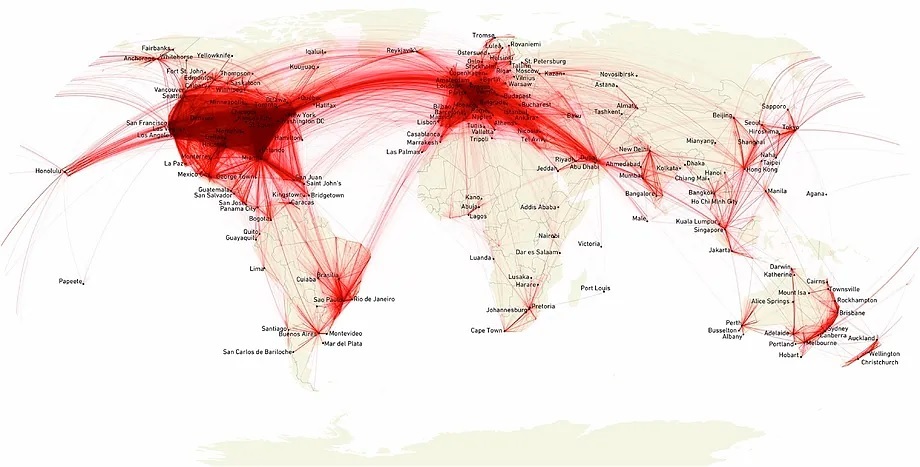Annual carbon dioxide (CO2) emissions from private aviation have surged by 46% between 2019 and 2023. These flights consume much more energy and emit much more CO2 per passenger than commercial flights, even though they are used by only 0.003% of the world's population, around 256,000 people. Each of them produces nearly 500 times more CO2 in a year than the average citizen.
Interestingly, the largest international events in the last five years were the ones that caused the highest peaks in air emissions. The event with the most private flights was the 2022 World Cup final held in Qatar, with 1,846 flights and almost 15,000 tons of CO2 emitted, followed by Davos Forum with 660 planes. Paradoxically, the UN meeting to mitigate climate change held last year in Dubai, COP28, was one of the events with the highest number of private flights, 644, which produced 4,800 tons of CO2.
Nearly a quarter of all private planes that flew to COP28 also flew to the World Cup final, although it does not mean the same people were on board, as many of these flights are charter. Other major events that caused emission peaks in the last five years were the Superbowl in Arizona or the Cannes Festival.
COP28 was the largest climate summit held to date, with 97,000 delegates and 400,000 visitors, but also had the largest carbon footprint, caused 60% by air traffic. In this regard, COP29 opening next week in Baku (Azerbaijan) expects half the number of delegates, between 40,000 and 50,000.
Until now, the true scale of global private aviation and the emissions it produces were not well known. That's why Stefan Gössling, a professor at the Linnaeus University School of Business and Economics in Sweden, and his colleagues analyzed data from 18,655,789 private flights operated by 25,993 business jet aircraft between 2019 and 2023, representing the vast majority of global private aviation. They then calculated the CO2 emissions of each aircraft by combining the fuel consumption rate indicated by the model and adding flight duration and trajectory data.
The results, just published in Communications Earth & Environment, reveal that private flights produced approximately 15.6 million tons of CO2 in direct emissions in 2023, an average of about 3.6 tons of CO2 per flight. This represented a 46% increase in private aviation emissions compared to 2019, equivalent to about 1.8% of the total emissions produced by commercial aviation in 2023.
For example, the Falcon 900B used by the Prime Minister, Pedro Sánchez, consumes about 1,300 liters of kerosene per hour, equivalent to two tons of CO2, according to manufacturer data.
The researchers also found that almost half of these flights covered a distance of less than 500 kilometers, and most were operated during weekends, indicating predominantly leisure rather than business use.
"We know that the wealthiest 10% of the population is responsible for 50% of emissions. This indicates that the most effective way to combat climate change may not necessarily lie in changing the habits of the majority of the population but in moderating the lifestyle of that top 10% of high emitters," says Víctor Resco de Dios, a professor of Forestry Engineering and Global Change at the University of Lleida, in statements to the Science Media Centre.
The authors also point out that users of these flights produced 2,400 tons of CO2 each in 2023, based on flight data from the unique tail numbers of their aircraft. This is nearly 500 times more than the average emissions per citizen in 2020, which amounted to 4.5 tons of CO2.
